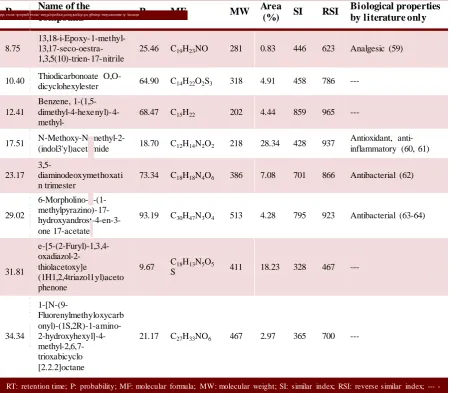Phytochemical Characterization of Marine Macro Alga Sargassum polycystem, Molecular Docking, and In Vitro Anti-bacterial Activity against Psuedomonas aeruginosa
Full text
Figure




Related documents
At room temperature all the femtosecond inscribed LPGs produced both red and blue wavelength shifts during their annealing time, see figure 3 and 4, whilst the fusion-arc LPGs
amphibians has shown that: 1) pacing of the apical area of the ventricle considerably reduces the parameters of the cardiac hemodynamics more in animals with successive (toad
The likely magnitude of underreporting of RTC-related injuries is particularly concerning with regards to motorcycles, as this group have been identified as having a particularly
2.4 Procedure for phytochemical tests: Phytochemical screening was conducted to test for the presence of compounds such as alkaloids, flavonoids, terpenoids, saponins,
As such, activity theory within a developmental research workshop seemed an appropriate tool to develop leadership practices in Children’s
As noted above with regard to the success of Kyrgyzstan in ending statelessness, it is through the collaborative efforts of civil society, stateless persons, government
using molecular approaches revealed 20 geno- types (T1–T20) based on 18S rDNA gene re- gion (3), most genotypes have been isolated from clinical cases, however, T4 genotype
The SPWT method was first tested by the ISPRS benchmark datasets. In the preprocessing, the LiDAR point clouds were resampled to a regular grid data. In order to do so,
